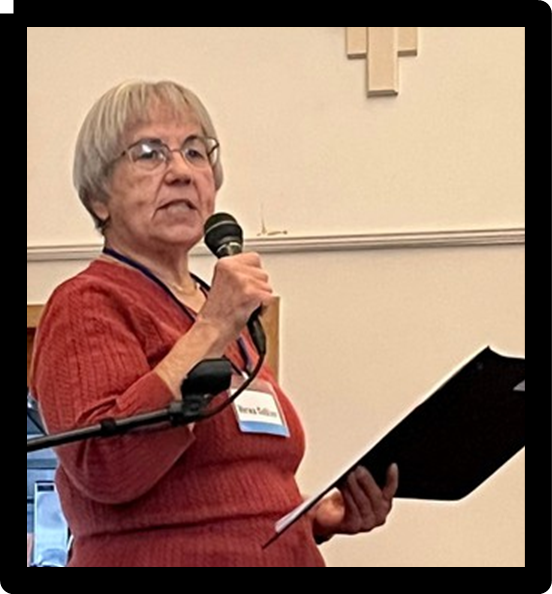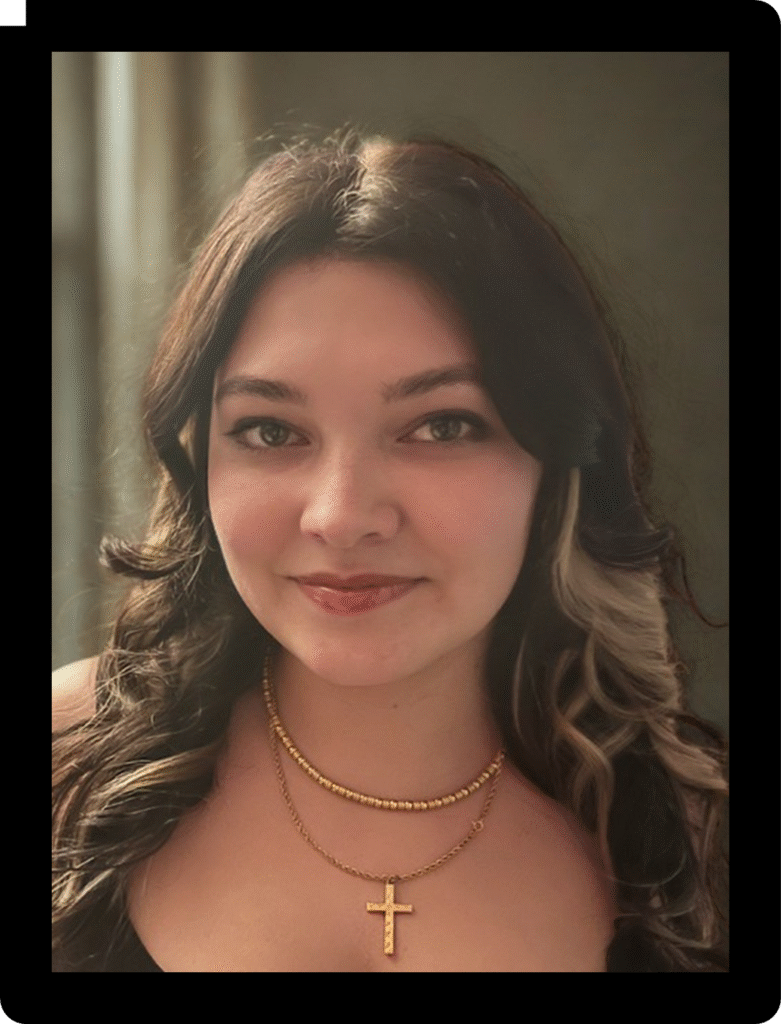
The Women of Faith (UWF) in the East District of EPA Conference gathered for their 20th Annual Celebration on October 11, 2025, at Lansdale First UMC, Lansdale PA, to fellowship, worship, conduct business and to learn about Native American history. The UWF women invited EPA Committee on Native American Ministries (CoNAM) to enact the interpretative blanket exercise, “The Loss of Turtle Island,” as a central feature of their celebration.
The East District women, young and old, actively participated in the scripted PowerPoint exercise in the Fellowship Hall after a continental breakfast and a brief opening ceremony which included viewing “The Red Road,” a video of the Land Acknowledgement and Welcome created by EPA/GNJ Communications team for the 2025 Annual Conference Session. The celebration ended after lunch with a business meeting and a communion service.
Pastor Marleah Doyle welcomed the East District women to the church she serves and enthusiastically joined the exercise, being one of the three remaining women on the last blanket at the end of the exercise.

In planning for the annual event as President of the East District UWF, Joy Frazier collaborated with CoNAM and looks forward as a member of the CoNAM Team to future connections with the UWF and their mission to “act boldly for justice and transform communities.”
CoNAM Team Leader, Sandi Cianciulli, who helped to facilitate the PowerPoint journey through the history of loss and grief by removing blankets to visually show the loss of land, is deeply touched by the stories of erasure every time the exercise is enacted. “You can’t tell this story too often,” she says, and that it why she commits her time and support to the committee. One of the participants in The Loss of Turtle Island, Courtney Bridges, who attends Lansdale First UMC, was fully involved in the exercise and was emotionally impacted by the tragic history of the Indigenous People of the land she calls home and how they lost that land.
Here is her story:
As soon as I walked in the building, I knew exactly where to go. Not because of abundant signage, but because I heard the giggles and laughter of women coming together. It’s a sound that has pervaded halls and meeting rooms and phone calls forever. Wherever there are women, there will be community, and so I knew I was in the right place. A long table of breakfast awaited me upon entry, and women gathered around many round tables catching each other up on their lives, their worries, and their joys.

I took some time to read the poster by a clothing rack with small red dresses hanging, lifeless. The powerful visualization served to remind us how many Indigenous women and girls who have gone missing with no one to look for them. The dresses were all of very young girls who had gone missing just in the last year alone. What a powerful reminder that while we are gathered as a sisterhood, there are sisters who are missing from not just the room, but from their loved ones as well.

The main activity was presented through various blankets being spread on the ground. Scrolls were handed out, as well as cards with various images on them. We were asked to remove our shoes, and to find a blanket to stand on together. I stood on my brown plaid blanket with four other women and looked at the other blankets, some overlapping our own, and taking up most of the central space in the room. Over 50 women stood in their socks, mingling on the blankets. The first scroll was unraveled and read aloud. One by one, scrolls were read, containing real decrees and articles detailing the historical and systemic oppression of Native Tribes throughout North America.

Every so often we were asked to remove a blanket. As we smushed together, the blankets symbolizing our ancestral land dwindled, and history continued to unfold. The women holding cards picturing small pox blankets, or depicting terrible massacres left us in clumps. Soon, I looked around the room to see only one blanket remaining, and three women left standing. What started as a strong throng of milling ladies, had been reduced to three women on one blanket that none had originally started on, ancestral lands stripped, families lost to colonization, and a long sordid tale of injustices.
The walk through history was not a comprehensive one – a sobering thought considering how many atrocities were covered. Just like the little red dresses on the rack, the visual impact of the activity was immense.

Back at our round tables, we gathered amongst each other for discussion. There, we grappled with the role the Methodist church had in this history, how our own ancestors had a hand in the desecration of entire peoples. Earnest conversations about righting wrongs were pursued, financial giving was encouraged and supported, and a sense of mourning, heartbreak, and the power of unearthing lost history filled the room. Education is one of the most influential tools we have, and therefore, events like this keep that history and education in the hands of the people. I listened to one woman in particular draw parallels between the tactics used against Indigenous people and other marginalized groups. Connections and critical thinking flourished between the tables, and emboldened words of commitment to change were frequently exchanged.

With these sentiments in our hearts, the business end of the event unfolded with renewed vigor to implement change in our own selves, sisters, churches, and communities. We took communion together, remembering the life that was laid down for us. The greatest sacrifice the world has ever known in direct juxtaposition with the systematic oppression that still persists – but this time armed with knowledge, and brimming with ideas and solutions for the future.

Courtney Bridges is a recent graduate of West Chester University where she majored in Psychology, and minored in Social Work, and Civic and Professional Leadership. Courtney’s schooling and involvement with the Honors College at West Chester introduced her to interdisciplinary education where she learned science and the ins and outs of sustainable living through an Indigenous lens, using the book Braiding Sweetgrass as a central focus point. Her studies pushed her to expand her worldview and to explore new boundaries and perspectives. It is her honor to have joined United Women of Faith in their efforts towards education and reparations to the Native Tribes who lay claim to the land her community benefits from.
